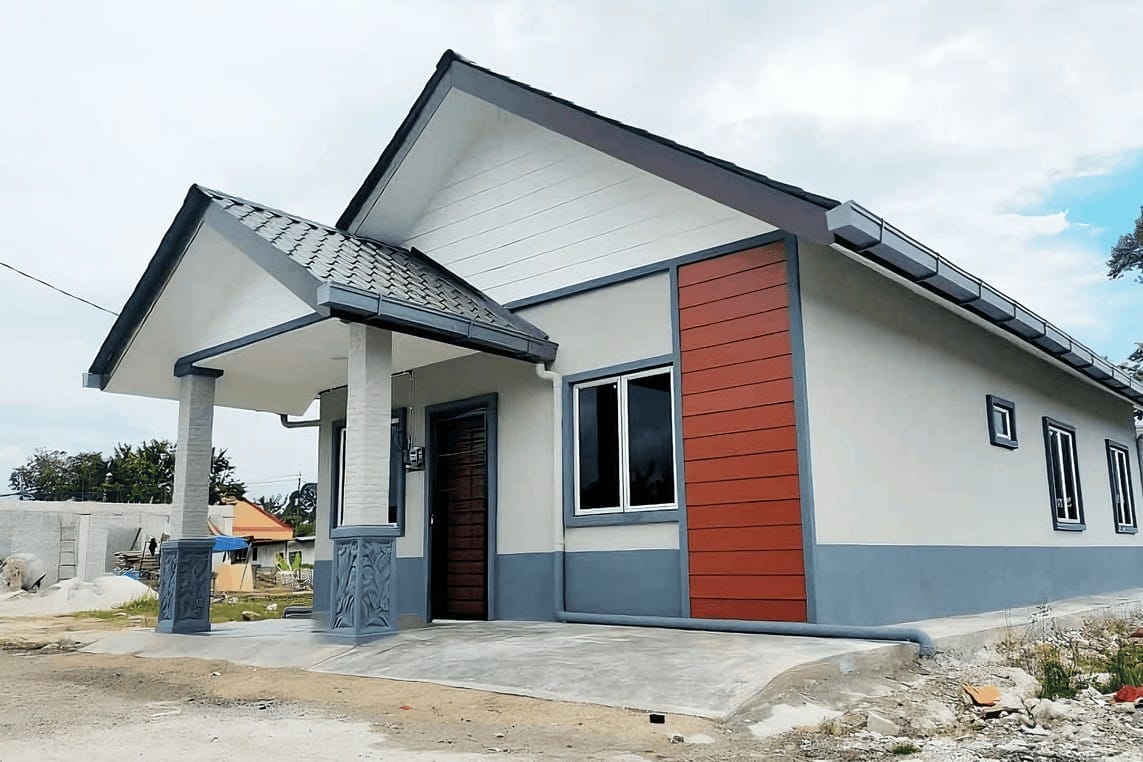Unlocking the Blueprint: A Comprehensive Document Preparation Guide for Building Plan Approval
In the intricacies of construction and architectural design, the transition from an ambitious vision to a tangible structure is often paved with processes that can feel daunting. At the heart of this journey lies a crucial step: obtaining building plan approval. Every blueprint, every structural detail, and every safety measure must align not only with the dream of the architect but also with the regulatory frameworks established to ensure safety, sustainability, and community harmony. This article aims to demystify the preparation of essential documents required for building plan approval, offering a clear roadmap for homeowners, builders, and developers alike.
Navigating the bureaucratic maze of permits and approvals can be an overwhelming experience, with regulations varying widely between jurisdictions. However, a solid understanding of the documentation required—along with meticulous attention to detail—can make a world of difference in expediting the approval process. From architectural drawings and site plans to engineering assessments and environmental assessments, this guide will provide a comprehensive look at what to include, how to format your documents, and best practices to follow, ensuring that your application not only meets but exceeds the expectations of regulatory bodies.
Whether you are a seasoned developer embarking on another project or a first-time homeowner taking the reins of your building journey, preparation is key. Join us as we explore the fundamental components of a successful plan approval application, empowering you with the knowledge to translate your dreams into bricks and mortar with confidence and clarity. Welcome to your first step toward turning blueprints into reality.
Understanding Regulatory Requirements for Building Plan Approval
The path to acquiring building plan approval is paved with regulatory requirements that vary widely depending on location, project type, and purpose. Navigating through these regulations can seem daunting, but understanding the key components can streamline the approval process. It is essential to familiarize yourself with local zoning laws, which dictate the types of structures allowed in specific areas, and to ensure your plans comply with health and safety standards set forth by governing bodies.
Before embarking on your building project, consider compiling the necessary documentation that will underpin your application. Common documents needed include:
- Site Plans: Detailed drawings that outline the proposed development’s layout in relation to existing structures.
- Architectural Drawings: Comprehensive illustrations of the building’s design, highlighting dimensions and materials.
- Environmental Impact Assessments: Reports that evaluate potential ecological effects and compliance with sustainability laws.
- Engineering Reports: Technical studies regarding structural integrity and systems like plumbing and electrical.
To facilitate the review process, it can be beneficial to create a checklist or table summarizing the regulatory requirements relevant to your specific project. This allows all stakeholders to stay organized and ensures that nothing is overlooked. Here’s an example of how a streamlined checklist might look:
| Requirement | Status | Completion Date |
|---|---|---|
| Site Plan Submission | ✅ | 2023-07-15 |
| Environmental Assessment | ❌ | – |
| Architectural Drawings | ✅ | 2023-08-01 |
| Engineering Reports | ✅ | 2023-08-10 |

Essential Documents for a Comprehensive Submission
Preparing the necessary documentation is pivotal for obtaining building plan approval. Among these documents, the construction drawings hold paramount importance. These detailed blueprints illustrate every aspect of the project, including site plans, floor plans, elevations, and sections. Each drawing should be precise and to scale. Moreover, ensure that all drawings are signed and stamped by a licensed architect or engineer to authenticate their validity.
Another crucial document is the project specifications, which outline the materials, workmanship, and quality standards to be adhered to throughout the construction. This document complements the construction drawings and provides clear guidelines for contractors. Additionally, a comprehensive site survey is essential. This survey should detail the property’s boundaries, topography, and any existing structures or easements, ensuring that the proposed design complies with local zoning regulations.
Lastly, a completed application form is required, along with any pertinent fees associated with the approval process. You may also need to include other supplementary documents such as environmental assessments and proof of ownership. Below is a simple table summarizing these essential documents:
| Document | Description |
|---|---|
| Construction Drawings | Detailed blueprints illustrating project specifications. |
| Project Specifications | Guidelines on materials and quality standards. |
| Site Survey | Detailed boundary and topography information. |
| Application Form | Official request for building plan approval. |
| Environmental Assessment | Evaluation of potential environmental impacts. |
| Proof of Ownership | Documentation confirming ownership of the property. |

Tips for Organizing Your Building Plan Package
Organizing your building plan package is a critical step in ensuring that all necessary documents are readily available for review and approval. Begin by creating a comprehensive checklist of required documents, which may include architectural drawings, structural calculations, and site surveys. This checklist will serve as your roadmap and help you avoid the common pitfalls of last-minute scrambling for paperwork. It’s beneficial to keep the materials neatly categorized, such as:
- Architectural Drawings – All floor plans, elevations, and sections.
- Structural Documents – Calculations and design specifications.
- Permits - Necessary zoning and building permits.
- Site Plans – Detailed maps showing property boundaries.
Next, utilize binders or digital folders to sort these documents, making sure each category is clearly labeled. By using dividers within binders or creating distinct folders in a digital environment, you enhance your efficiency in locating specific documents during the review process. Additionally, consider developing a simple yet effective tracking table to monitor the status of each document’s approval. An example format could include:
| Document Name | Status | Date Submitted | Approval Date |
|---|---|---|---|
| Architectural Plans | Pending | 2023-10-01 | N/A |
| Structural Calculations | Approved | 2023-09-25 | 2023-10-05 |
| Site Survey | Pending | 2023-10-02 | N/A |
Lastly, it’s crucial to maintain a communication log with relevant stakeholders, such as architects, surveyors, and local officials. This log should document conversations, emails, and any feedback received throughout the document preparation process. Establish a dedicated section in your building plan package for this correspondence to ensure easy access. This proactive approach not only supports organized preparation, but also fosters collaborative relationships, helping smooth the path to project approval.

Common Pitfalls to Avoid in Document Preparation
Preparing documents for building plan approval can often lead to unforeseen challenges, especially if key details are overlooked. One of the most common mistakes is inadequate information. Ensure that all necessary data is complete, including site dimensions, zoning information, and relevant environmental assessments. Omitting any crucial details can delay the approval process significantly and may require resubmission of the entire document package.
Another pitfall in document preparation is the failure to adhere to guidelines provided by local authorities. Each municipality may have specific requirements regarding the format and content of building plans, including the types of materials to be included or forms to be filled. Failing to follow these guidelines can easily result in rejection. It is essential to consult your local planning department’s requirements thoroughly before finalizing your documents.
Lastly, poor organization can lead to confusion. A well-structured document not only presents information clearly but also enhances the chances of a swift approval process. Utilize headings, bullet points, and tables to arrange data systematically. For instance, a summary of key project elements can be effectively displayed in a table:
| Element | Description | Status |
|---|---|---|
| Site Plan | Detailed overview of the property layout. | Completed |
| Zoning Compliance | Verification of zoning regulations. | Pending |
| Environmental Impact Study | Assessment of ecological effects. | In Progress |
Q&A
Q&A: Document Preparation Guide for Building Plan Approval
Q1: What is the purpose of a Document Preparation Guide for Building Plan Approval?
A1: The Document Preparation Guide serves as a comprehensive roadmap for architects, builders, and developers, outlining the essential documents required to secure building plan approval from local authorities. It provides clarity and structure to the often complex process of ensuring compliance with zoning regulations, safety standards, and environmental considerations.
Q2: Who should utilize this guide?
A2: This guide is designed for a diverse audience, including architects, contractors, project managers, and even homeowners looking to undertake new constructions or renovations. Anyone involved in the building approval process will benefit from the organized, step-by-step instructions included in the guide.
Q3: What key documents are typically required for building plan approval?
A3: The key documents often include:
- Site Plans: Detailed drawings indicating the layout of the property, including building dimensions, setbacks, and landscaping.
- Architectural Drawings: Comprehensive schematics that illustrate the design, materials, and intended use of the building.
- Structural Plans: Technical specifications demonstrating how the building will be constructed, ensuring it meets safety and durability requirements.
- Environmental Impact Assessments: Studies that evaluate how the project will affect the natural surroundings.
- Permits and Licenses: Necessary approvals from various authorities, including zoning permits or occupancy licenses.
Q4: Are there specific formatting or presentation standards to adhere to when preparing these documents?
A4: Yes, most local authorities have set formatting standards to ensure uniformity and clarity in submissions. These can include specifications on document size, required margins, typeface, and drawing scales. The guide emphasizes adhering to these standards to avoid delays or rejections in the approval process.
Q5: How can improper documentation affect the approval process?
A5: Incomplete, unclear, or incorrect documentation can lead to significant setbacks in the approval process. This may result in delays that push back construction timelines and increase costs. In some cases, improper documentation could even lead to the application being denied, requiring the submitter to start the entire process anew.
Q6: Is there a checklist included in the guide?
A6: Absolutely! The guide contains a detailed checklist that allows users to track their progress in compiling necessary documents efficiently. This checklist serves as a valuable tool to ensure all components are adequately addressed before submission, streamlining the approval process.
Q7: Can this guide help in dealing with challenges or objections during the approval process?
A7: Yes, the guide not only assists in document preparation but also provides insights into common challenges and objections that may arise during the approval process. It offers strategies to preemptively address potential objections, enhancing the likelihood of a smooth approval journey.
Q8: Are there resources available within the guide to assist with special building projects?
A8: Indeed! The guide includes references to additional resources, such as templates for specific types of projects, links to relevant regulatory bodies, and contact information for professionals who can provide specialized advice based on project requirements.
Q9: How frequently should one refer to the guide during the approval process?
A9: It is advisable to refer to the guide continually throughout the approval process, especially as documents are being prepared, reviewed, and submitted. Keeping the guide close at hand ensures that all steps are followed and reduces the risk of overlooking critical requirements.
Q10: Where can one access the Document Preparation Guide for Building Plan Approval?
A10: The guide is generally available through local governmental planning departments, industry associations, and online resources dedicated to construction and building regulations. Make sure to obtain the most current edition to ensure compliance with the latest laws and practices in your jurisdiction.
Wrapping Up
navigating the landscape of building plan approval can be a complex endeavor, but with a well-structured document preparation guide, the journey becomes significantly more manageable. By understanding the intricate requirements and expectations set forth by regulatory bodies, you can streamline the submission process, minimize delays, and enhance the likelihood of successful approval. Remember, thorough documentation is not just a bureaucratic necessity; it is the foundation upon which your vision for a new structure will rise. As you embark on this undertaking, let clarity, precision, and attention to detail guide your efforts. Armed with the right tools and knowledge, you are well on your way to turning your architectural dreams into reality. So gather your plans, assemble your documents, and step confidently into the world of building approvals—where preparation is the key to unlocking a world of possibilities.



